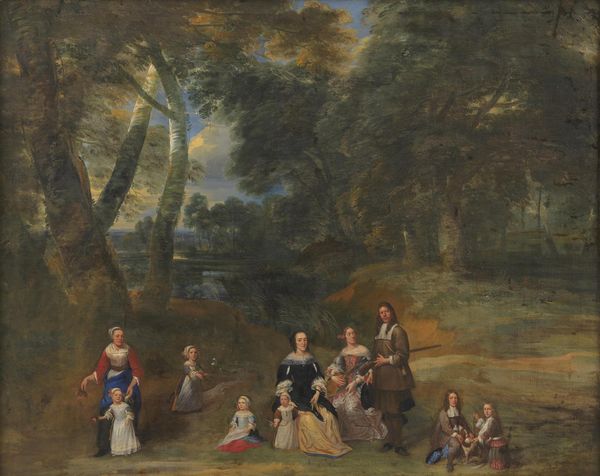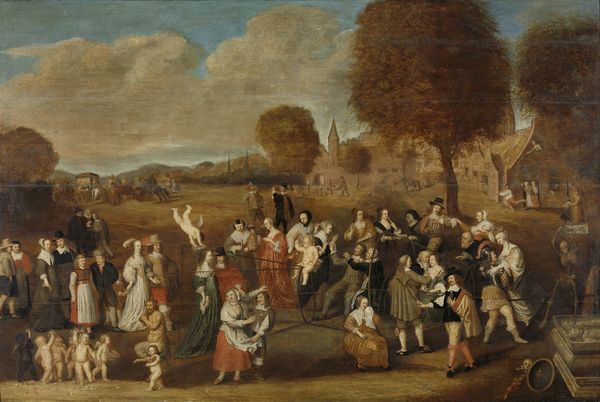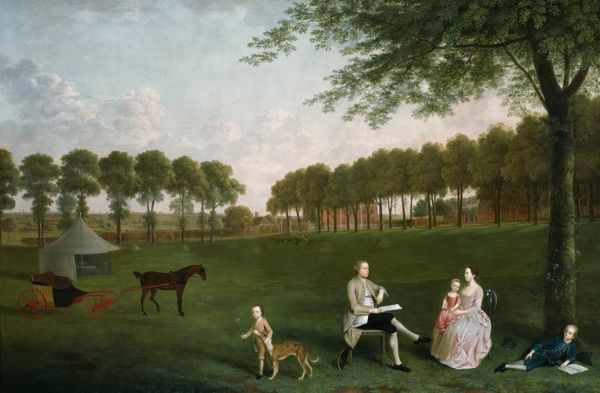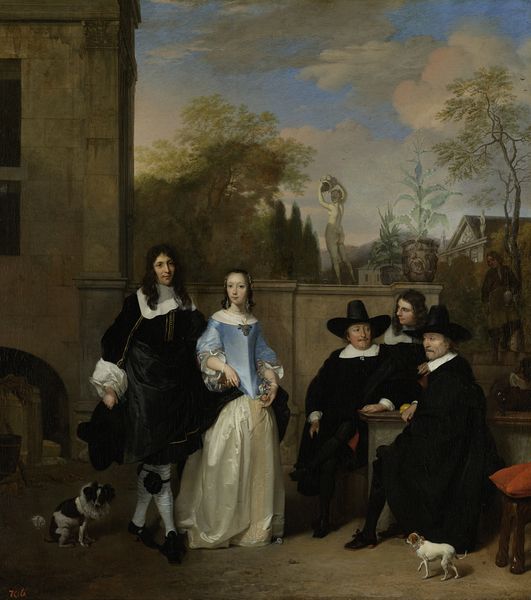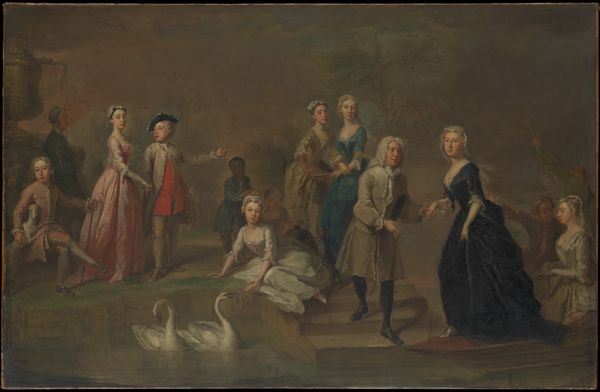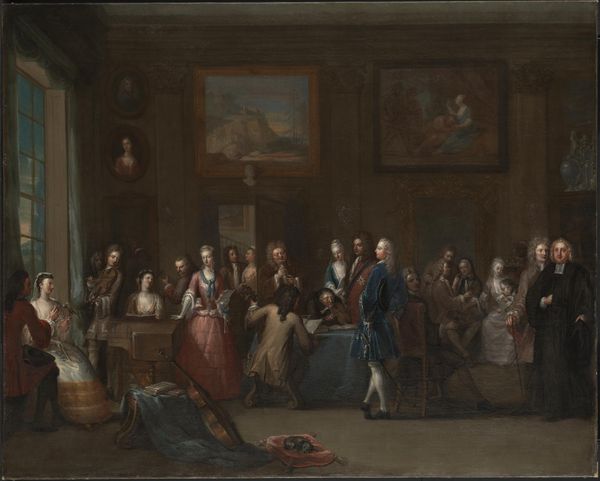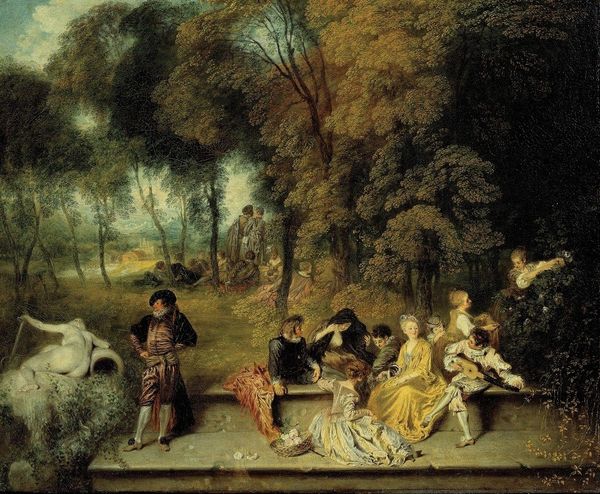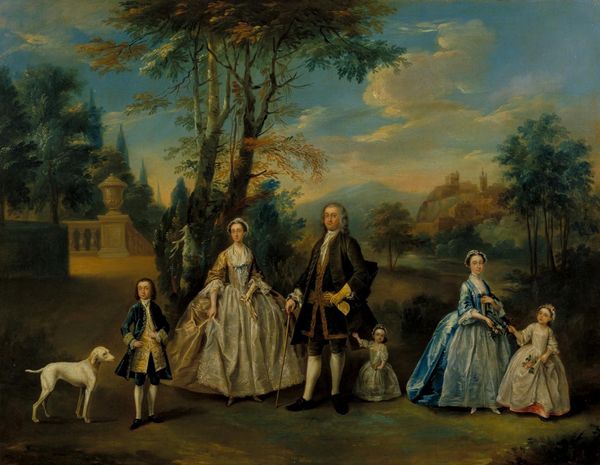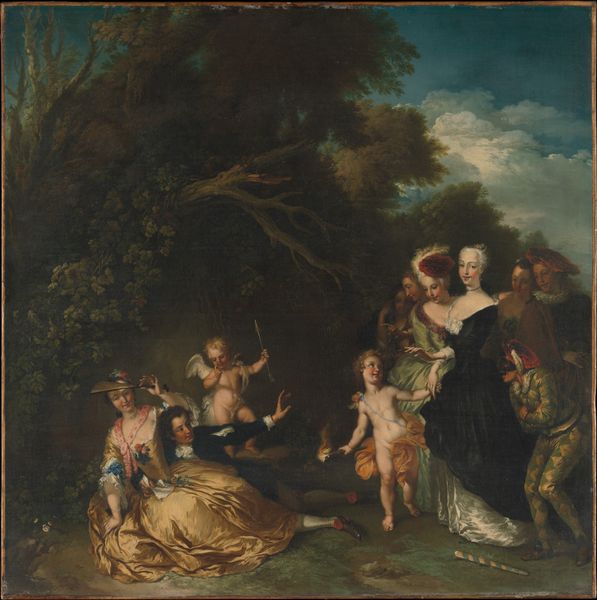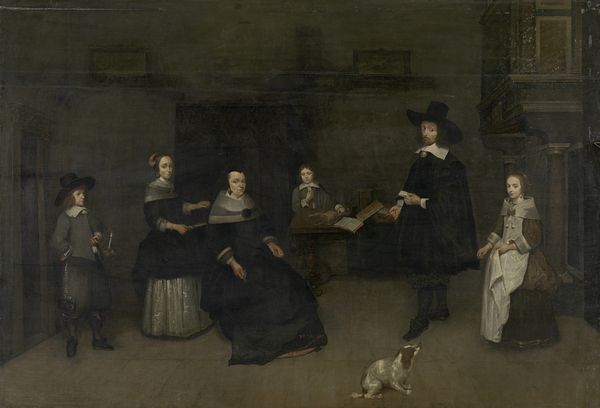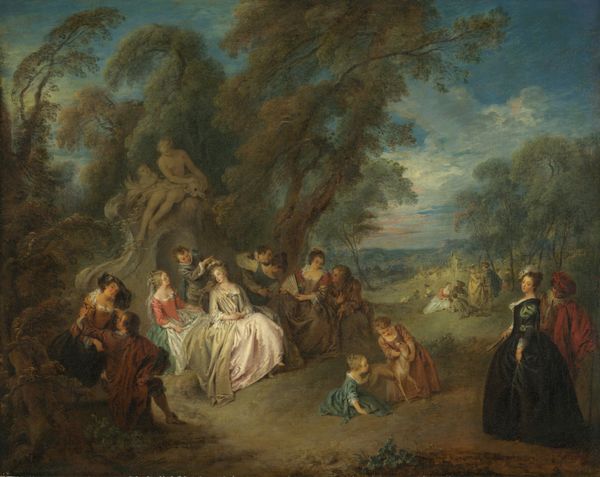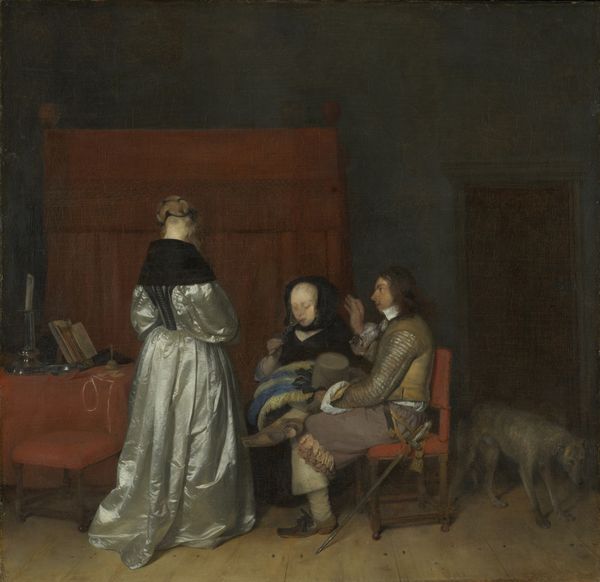
The Amsterdam Merchant Jeremias van Collen (1619-1707) with his Wife and their Twelve Children 1655 - 1657
0:00
0:00
painting, oil-paint
#
portrait
#
baroque
#
dutch-golden-age
#
painting
#
oil-paint
#
landscape
#
painted
#
group-portraits
#
genre-painting
Dimensions: height 107 cm, width 155 cm, depth 7 cm
Copyright: Rijks Museum: Open Domain
Curator: Here we have Pieter van Anraedt’s “The Amsterdam Merchant Jeremias van Collen (1619-1707) with his Wife and their Twelve Children,” created sometime between 1655 and 1657. Editor: Twelve children! It's both charming and overwhelming at first glance. You see them spread across what looks like a manicured garden. There’s this strange mix of formality in their poses with an underlying sense of vibrant chaos in the gestures. Curator: This painting offers insight into the social and cultural values of the Dutch Golden Age. Family portraits like these were not just records; they were statements about status, prosperity, and civic responsibility. Displaying such a large, healthy family communicated the van Collen's success and contribution to society. Editor: Right, but I wonder about the practical aspects, you know? How did van Anraedt manage to render all these figures? Did he make individual studies? The details in their clothing—look at the silk on the mother’s dress! And think of the cost of such material…it screams wealth, but it also illustrates the painter’s craftsmanship and his ability to convincingly capture the textures and forms. Curator: Indeed, the materiality is revealing. These group portraits were carefully staged events, meticulously crafted to project a certain image. The classical architectural elements, and the grand estate in the background are important as they served as visual signifiers of their elevated position within Amsterdam's merchant class. Editor: Yes, the whole scene does feel meticulously arranged, especially if you consider all the human capital on display! Each element has probably been accounted for. I find myself contemplating how much labor was invested in this whole operation - both in producing the art and maintaining this lifestyle! Curator: Reflecting on this, one grasps how closely private life was linked to public image during that time, reinforcing communal values and maintaining hierarchies within Dutch society. Editor: Looking at the labor involved—from painting the intricate details to actually birthing and raising so many children—you start appreciating the scale of production on display here! It makes me view it as not only an artwork, but also as evidence of lived, material realities of the 17th century.
Comments
No comments
Be the first to comment and join the conversation on the ultimate creative platform.
